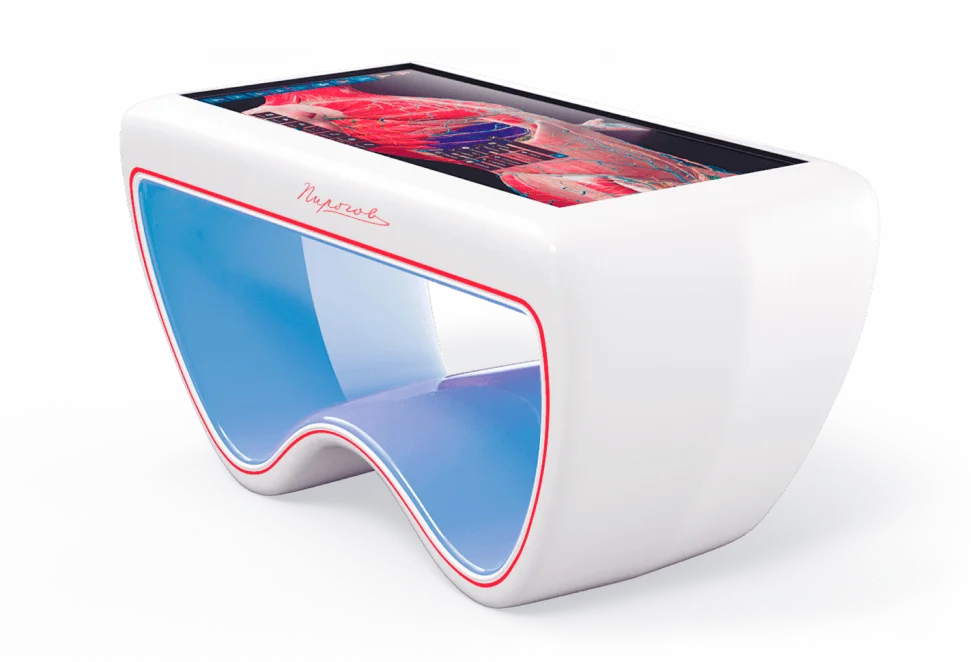What is the virtual dissection table in 2024?
A Virtual Dissection Table is a sophisticated educational tool that utilizes virtual reality (VR) or augmented reality (AR) technologies to simulate the process of dissection for educational purposes. Instead of using traditional cadavers or specimens, students can interact with a digital representation of anatomical structures in a three-dimensional virtual environment.
Key features of a Virtual Dissection Table may include:
-
3D Visualization: The table provides a realistic and detailed 3D representation of anatomical structures, allowing students to explore and manipulate virtual organs, tissues, and other body parts.
-
Interactivity: Users can interact with the virtual models using various input devices, such as touchscreens, styluses, or motion controllers. This enables them to virtually dissect and explore anatomy in a hands-on manner.
-
Real-time Simulation: The virtual dissection can simulate the physical properties of tissues, allowing students to experience realistic cutting, separation, and exploration of anatomical structures.
-
Anatomical Accuracy: Virtual Dissection Tables strive to accurately represent the human body's anatomy, providing a valuable learning resource for medical and healthcare education.
-
Educational Modules: The system may include pre-designed educational modules or scenarios that guide students through specific dissections or medical procedures. These modules can cater to various levels of expertise and cover different anatomical regions.
-
Collaborative Learning: Some Virtual Dissection Tables support collaborative learning, allowing multiple users to interact with the virtual environment simultaneously. This feature can be particularly useful for group discussions and collaborative problem-solving.
-
Data Integration: Virtual Dissection Tables may integrate additional data sources, such as medical imaging (MRI, CT scans) or pathological information, enhancing the learning experience with real-world clinical context.
-
Feedback and Assessment: The system may provide feedback on the user's actions, allowing for assessment and evaluation of the virtual dissection. This can be valuable for tracking progress and understanding the user's level of proficiency.
These virtual tools are especially beneficial in situations where traditional dissection may not be feasible or desirable, such as in early stages of medical education or in situations where access to cadavers is limited. Virtual Dissection Tables contribute to a more immersive and engaging learning experience in the field of anatomy and medical education.
Where to buy
-
Research Companies and Manufacturers: Start by researching companies and manufacturers that specialize in educational or medical simulation technologies. Look for reputable companies that offer Virtual Dissection Tables or similar products.
-
Contact Distributors: Some companies may have official distributors or resellers. Check the official websites of the companies you are interested in, and see if they provide information on authorized distributors or resellers in your region.
-
Contact Educational Technology Suppliers: Reach out to suppliers or vendors that specialize in educational technology, medical simulation equipment, or virtual reality solutions. They may carry a range of products, including Virtual Dissection Tables or similar educational tools.
-
Explore Online Marketplaces: Some online marketplaces or e-commerce platforms may offer educational technology products. Check platforms like Amazon, educational supply websites, or specialized platforms that focus on medical simulation equipment.
-
Consult with Educational Institutions: Contact educational institutions, particularly those in the medical or healthcare field, to inquire about where they source their simulation equipment. They may provide insights into reputable suppliers or manufacturers.
-
Attend Trade Shows and Conferences: Industry-specific events, trade shows, or conferences related to medical education, simulation, or technology often feature exhibitors showcasing the latest products. Attendees may have the opportunity to see demonstrations and connect with suppliers.
-
Check for Updates: Since my knowledge has a cutoff date of January 2022, it's essential to check for any updates or new developments in the field of virtual dissection technology. New products or suppliers may have entered the market since then.
-
Consult with Experts: Reach out to educators, professionals in the medical field, or technology experts who may have insights into reputable suppliers or manufacturers of Virtual Dissection Tables.
Pirogov Virtual Dissection Table

An educational tool, designed with simplicity in manufacturing and user-friendliness in mind, effectively addresses the challenge of limited access to high-quality biological specimens.
Featuring an exceptionally intuitive interface, incredibly realistic 3D anatomical surfaces, and adaptability for various scenarios, this tool proves invaluable. It tackles the issue of scarce cadaver supplies, offering immersive experiences in anatomy learning. Users can visualize and rotate organs in a complete 360-degree view, with the added option to peel off layers, revealing underlying structures. Step-by-step dissection procedures are accompanied by instructions, eliminating the need to contend with unpleasant odors commonly associated with anatomy studies.
Tailored to align seamlessly with medical syllabi, the tool includes quizzes and practical exercises, enhancing the overall learning process. Opting for the PIROGOV virtual dissection table, coupled with the necessary PIROGOV license package, ensures accessibility for every faculty member and student in your college or university. This allows for the utilization of comprehensive anatomy content in both classroom settings and independent study, without dependency on traditional facilities or equipment. The wealth of remarkable anatomy resources is accessible to educators and learners alike, whether on the Interactive 3D Table, PCs, iPads, or smartphones.
все статьи





